Formula 1 is without a doubt the pinnacle of motorsport aerodynamics. Between extensive usage of both wind tunnels and very high end computing platforms, teams are constantly trying to one-up each other in the quest for maximum performance. Modern F1 cars are anything but the pure, smooth, handsome machines from yesteryear. Shod with flip-ups, viking horns, barge boards, turning vanes, nose cone holes, and hundreds of other devices aimed to shape, direct, and optimize airflow, Formula 1 cars appear as if they could poke an eye out from 50 meters away. While cars from the '80s and '90s may be more visually pleasing to the eyes, advances in CFD allow modern vehicles to navigate a track as fast or faster with substantially less engine power.
Formula 1 - 1990

Formula 1 - 2008

Particularly in the last few years, all teams have been investing great sums of money in superior computers to perform their CFD needs faster and more accurately. Once the realm of dreams, some full car simulations consist of 50-100 million cells. Rumor has it that one team has experimented with simulations exceeding 1 billion cells. Naturally, this computing power comes at a price, but with teams like Renault investing approximately 50 million USD in their CFD solutions, anything seems possible...
While only a select few have access to a machine with such staggering computing power, smaller scale studies can allow engineers with average workstations to take a look into what makes an F1 car so fast.
Air Particle Traces
Air Particle Traces
Side Profile View - Air Velocity
Side Profile View - Air Velocity
Pressure Profiles (Including Ground Plane)
Front Iso View of Pressure
Rear Iso View of Pressure






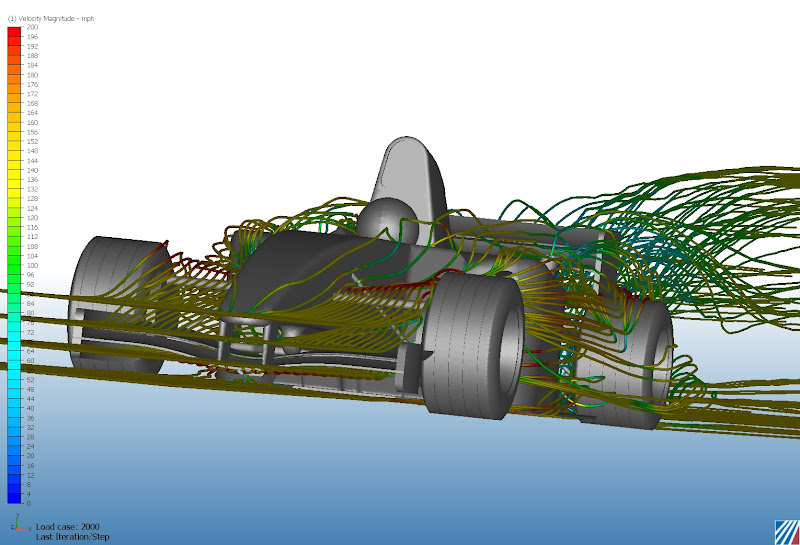
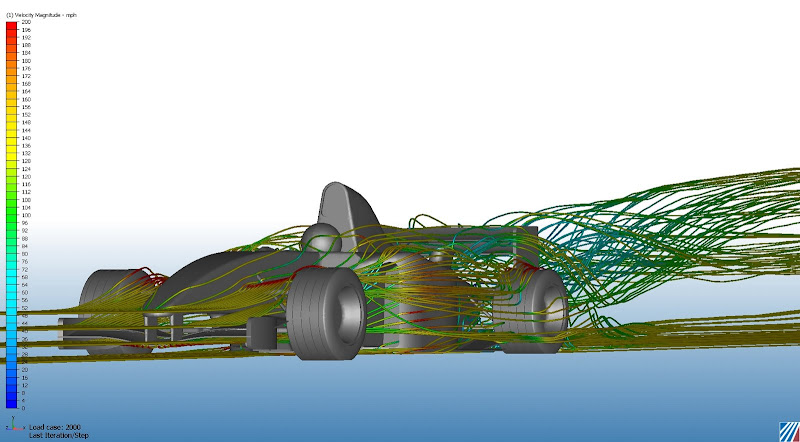
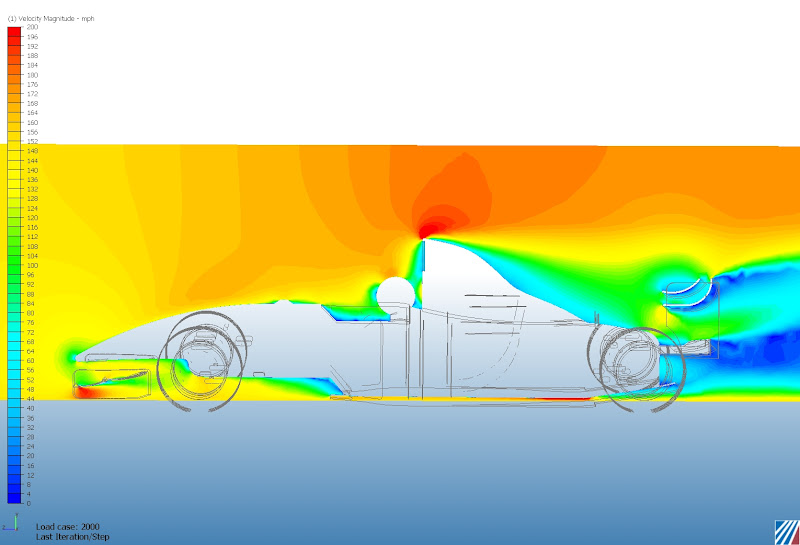

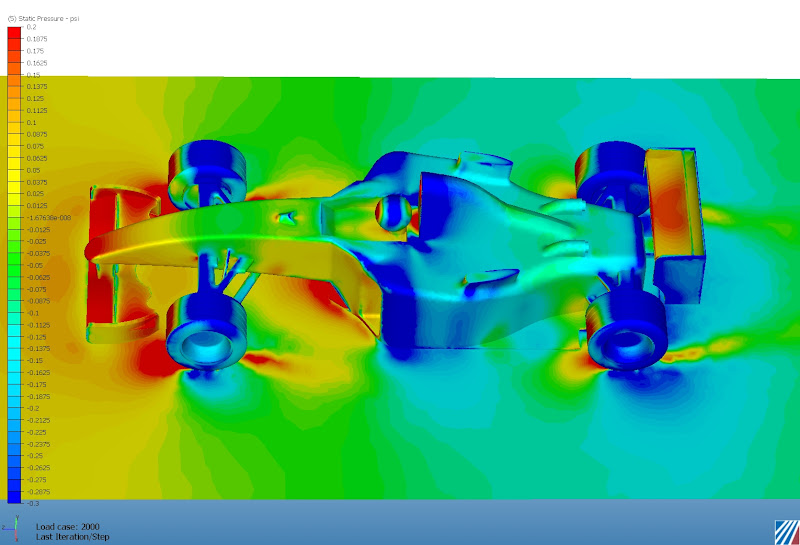
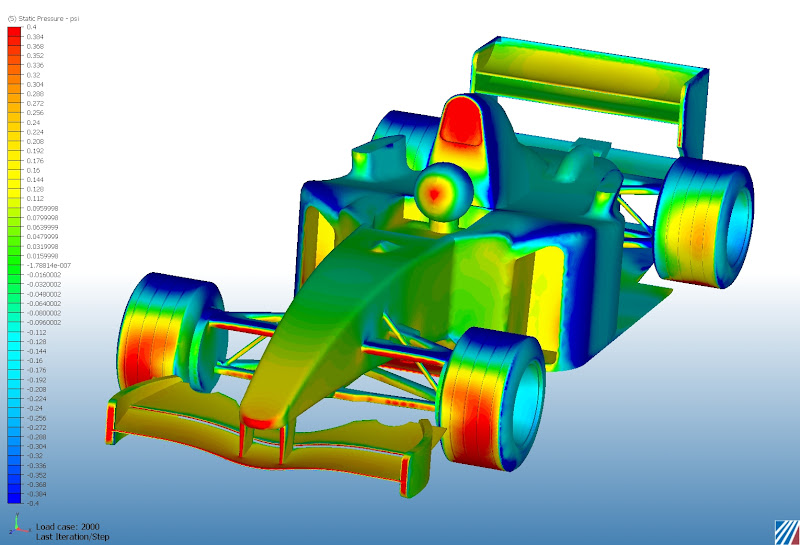
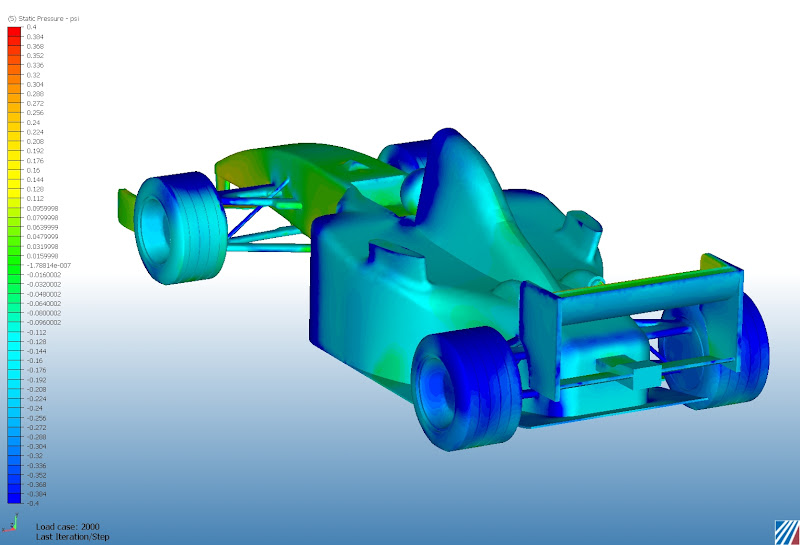





Tidak ada komentar:
Posting Komentar